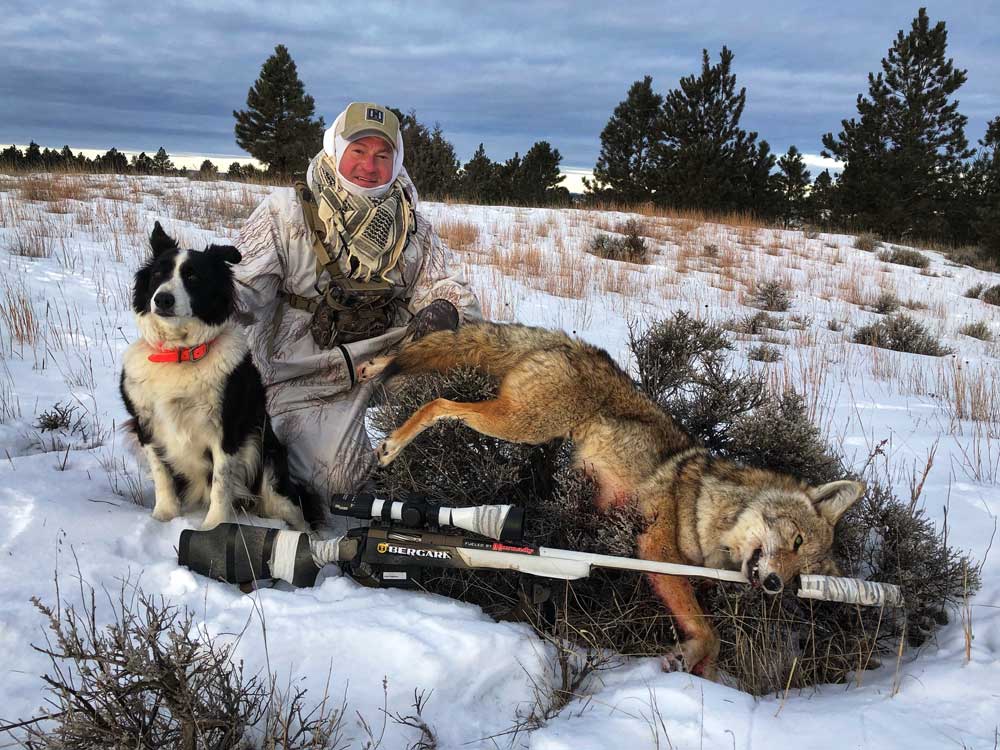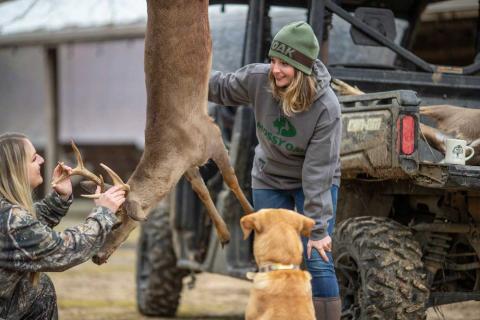Mark Kayser
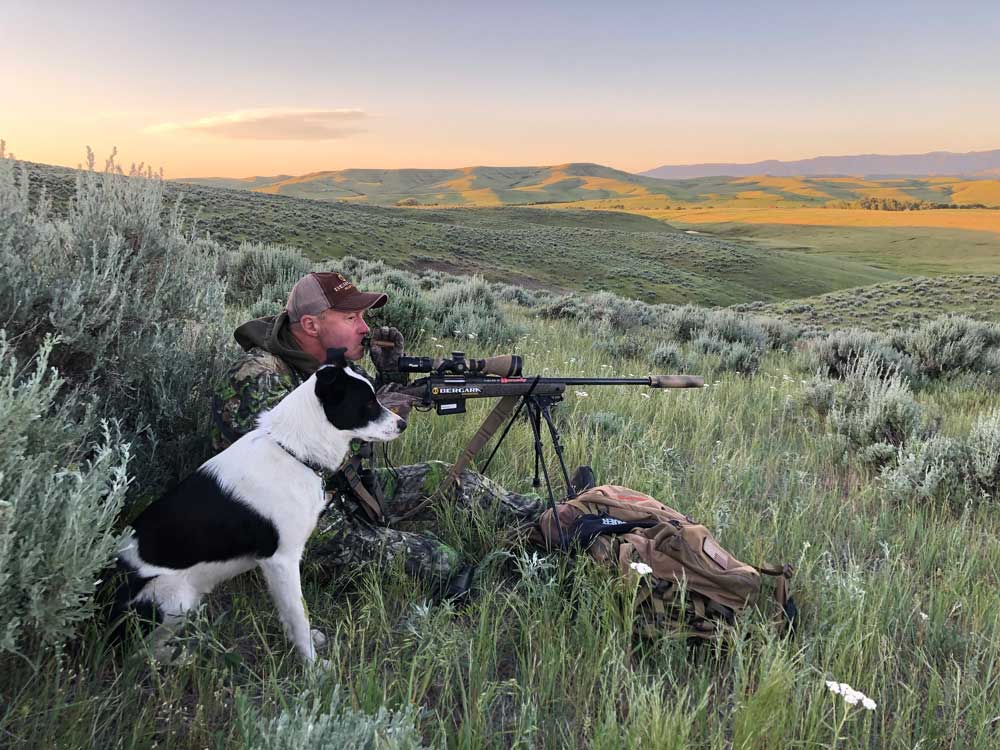
I have always been a dog person, and like most kids, begged my parents for a puppy at an early age. Over my childhood, I enjoyed the company of rough collie before I had a memory. I do recall a poodle that sadly met fate with the Michelin man. Another crossbreed Saint Bernard and elkhound proved too wild for our backyard and then my teenage years took over.
During my formidable years of acquiring hunting experience, coyote hunting piqued my interest and hearing of animal damage control officers using dogs to lure in cagey coyotes fascinated me. Of course, life happened. A wife, kids and a huge move to Wyoming came first, but in the back of my mind, I kept the coyote hunting dog partnership as a future project. When our kids reached an age of some maturity, a family vote brought a fluffy border collie into our life.
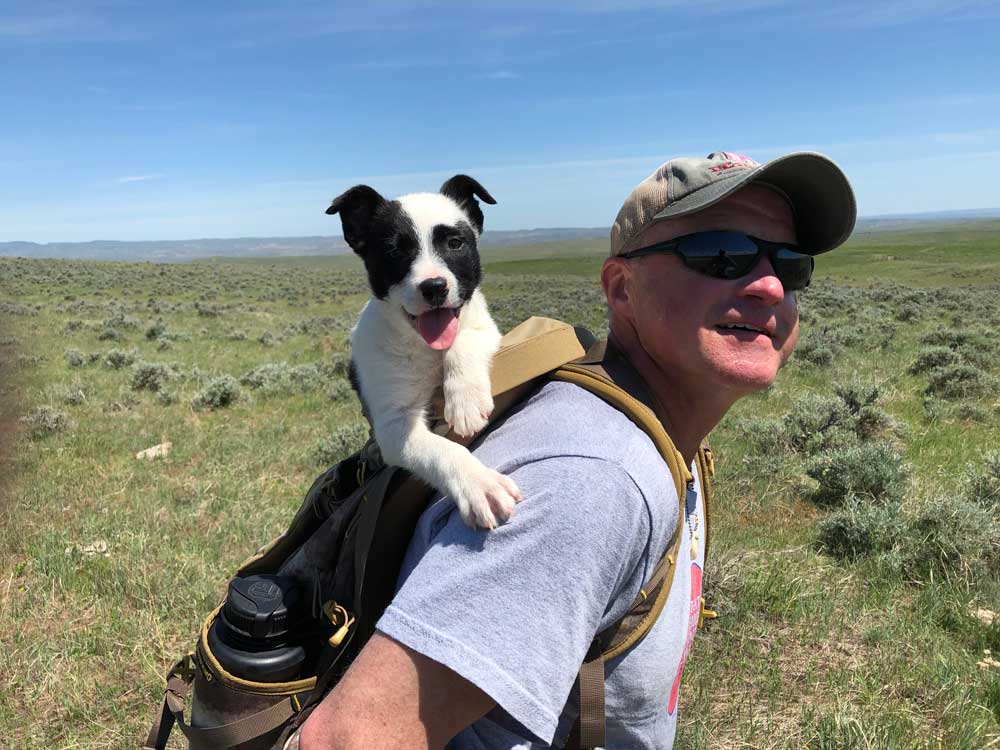
Choosing a coyote dog is relatively easy. The mountain cur is today’s go-to dog for coyote work. Nevertheless, our new dog was to serve multiple purposes. First and foremost, it needed to be an easily trained family dog. A border collie fit the definition, especially for our homestead with livestock in the country. For me, it needed to be able to hike long miles, possibly search out a shed antler and finally, pester coyotes. From my discussions with animal damage control officials, herding dogs were also players in the coyote game.
Training Day
You cannot just take any dog breed and let it roam in coyote country. The breed needs to be somewhat smart, defensive and savvy enough to evade a gang altercation. Your pug or Pekinese should stay on the couch. An inadequately trained dog will also not suffice. The dog needs to be trained in basic commands and follow those commands, no questions asked. Without question, it also needs firearm acclimation to avoid being gun shy. Start out with a pellet gun and work up slowly using bird dog training guidance. A suppressor is also a solid advantage for everyone involved in the hunt.
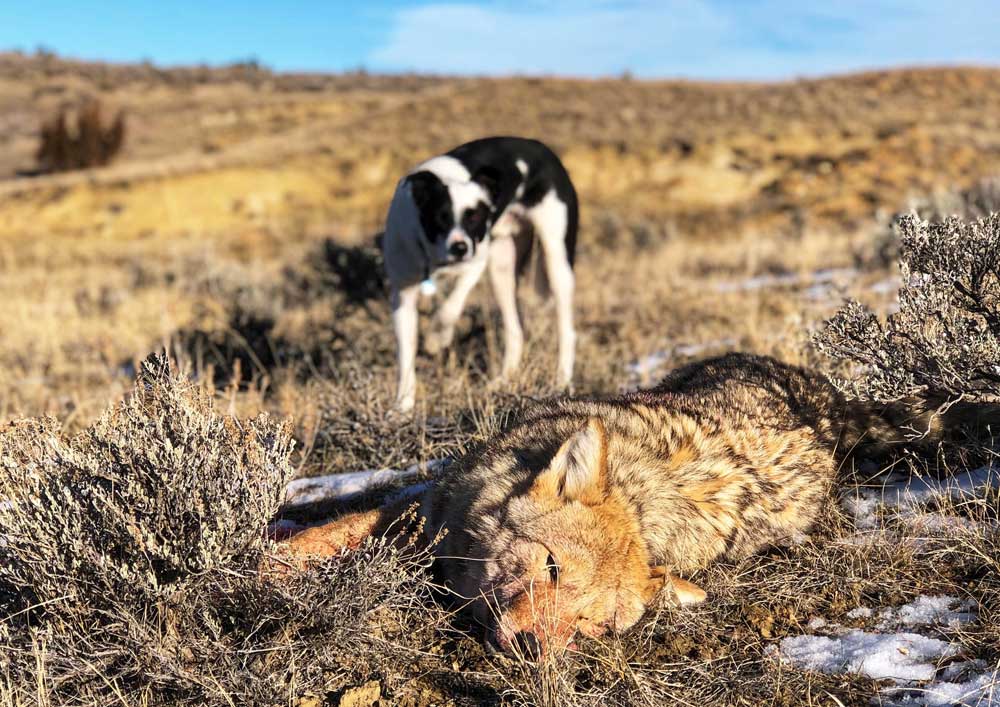
My first border collie, Sage, is now in retirement, but I worked diligently with her to master the basic commands. In addition to sit, stay, down and other commands, I also initiated a bonding routine. Instead of putting Sage in a kennel or leaving her at home while I ran errands, I brought her everywhere. I am now on my second border collie (we do question his family tree) and I used the same training on him. Sully, like Sage, does not question commands and is so tuned in to the hunt, he runs to the sound of the gun making sight-in sessions a nervous affair for the eager canine hunter.
Both puppies joined me in the mountains at an early age. When their little legs tired, it was time to plop them in a backpack, again forming trust, along with a bonding experience. Sit and stay were easy, but training both for coyotes would require some creative exercises. With my first border collie, the neighbor dog and its reoccurring visits to our property was a perfect training venue. Sage chased the dog off repeatedly and set up her own safe space. It took a few years of coyote encounters, but she set up similar perimeters while hunting to ensure coyotes knew the boundaries. Fortunately, nearly every coyote wanted to test those boundaries. Early on, I also encouraged both my border collies to “get em” when we approached a dead coyote. After they sniffed the coyote, I praised them as if they just saved Timmy from a well.
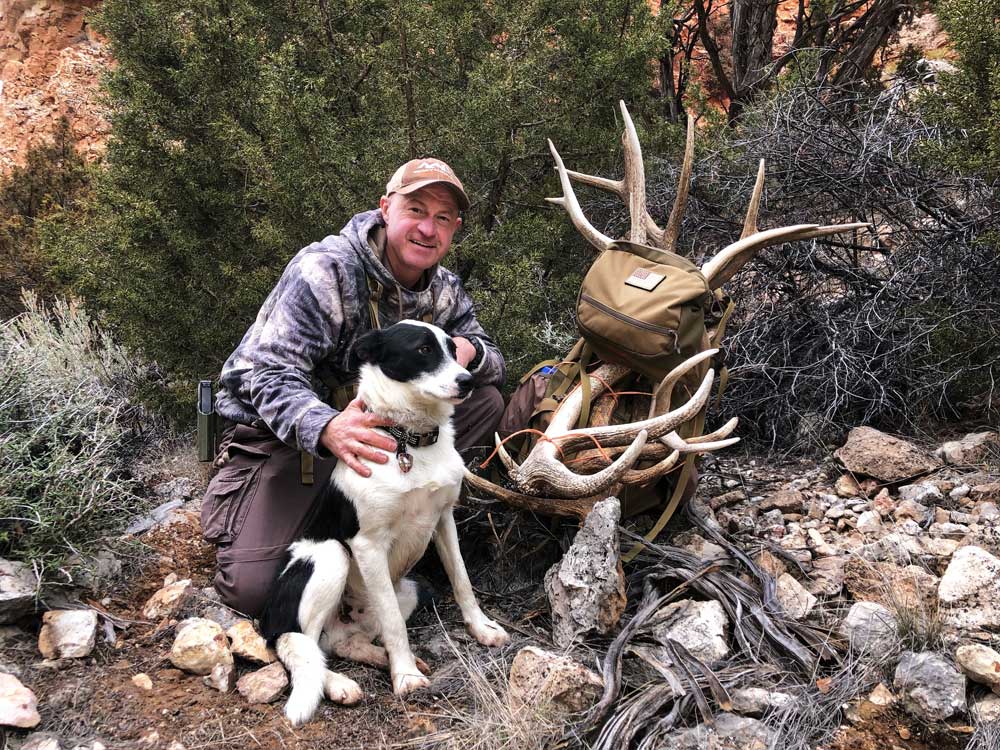
Sully, my latest coyote dog project, likely learned to defend the homeland from Sage, but also has an instinctive boldness to guard our house and coyote calling positions. His light bulb just lit on a recent coyote outing. Up until then, he served more as a decoy and not as an instigator, but when three coyotes slipped by us on a timbered setting, he went into full Superman mode. After a short chase, he loped back to me with a new enthusiasm for the game. Nearing his second birthday, I could see a new coyote hunting partnership forming fast.
Let’s Go Hunting
There are two main schools of thought for using dogs as coyote hunting partners. Most serious dog users utilize the previously mentioned mountain curs for tolling. This tactic uses the aggressive nature of curs to antagonize and toll coyotes into easy shooting range. Much of the tolling hunting takes place in the warm-weather months when coyote pairs determinedly protect den sites and pups. Hunters scout for denning areas and then use calls to persuade coyotes to show themselves. Once the dogs get a visual, they tease and torment the coyotes to follow them back to their owners waiting with a V-Max finish.
The second school of thought is simply using a dog as a moving decoy. That has been my main use of dogs. I admit, I have been venturing out more in the warm-weather months for tolling to provide my new dog Sully with more coyote experience, but his main purpose is to be a moving decoy.
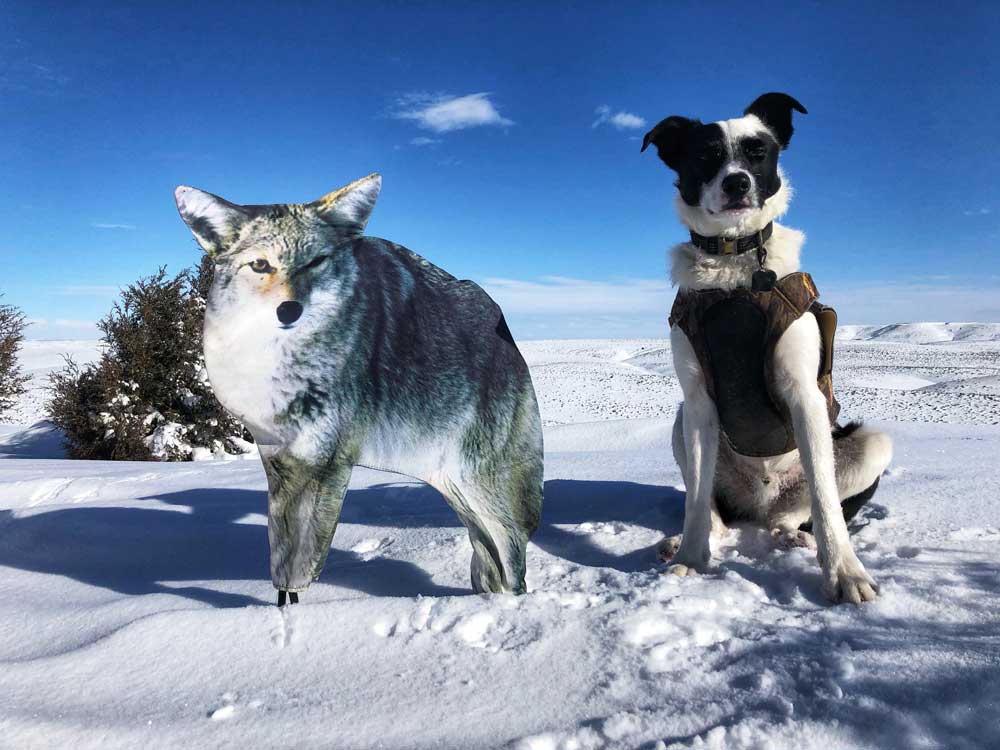
The decoy strategy works well in my world of spooky, public-land coyotes who have already survived aerial eradication efforts. Most coyotes I hunt in the winter are worried more about survival than pup protection. Even so, what I have discovered is that young-of-the-year coyotes, especially sibling groups, and dominant adults, characteristically have an interest in another pooch. This interest is likely territorial protection and curiosity since my setups typically involve coyote vocalizations, plus a frantic main course for dinner. Most coyote encounters are defined by circling coyotes lured by the canine movement of my dog.
My goal was never to have my canine partner get in fights with coyotes. In fact, most of my setups occur in the dimly lit hours of dawn and dusk. In that setting I believe the ghostly shadow of my dog pacing on a ridge above me instills confidence in coyotes that already heard my predator calling sounds.
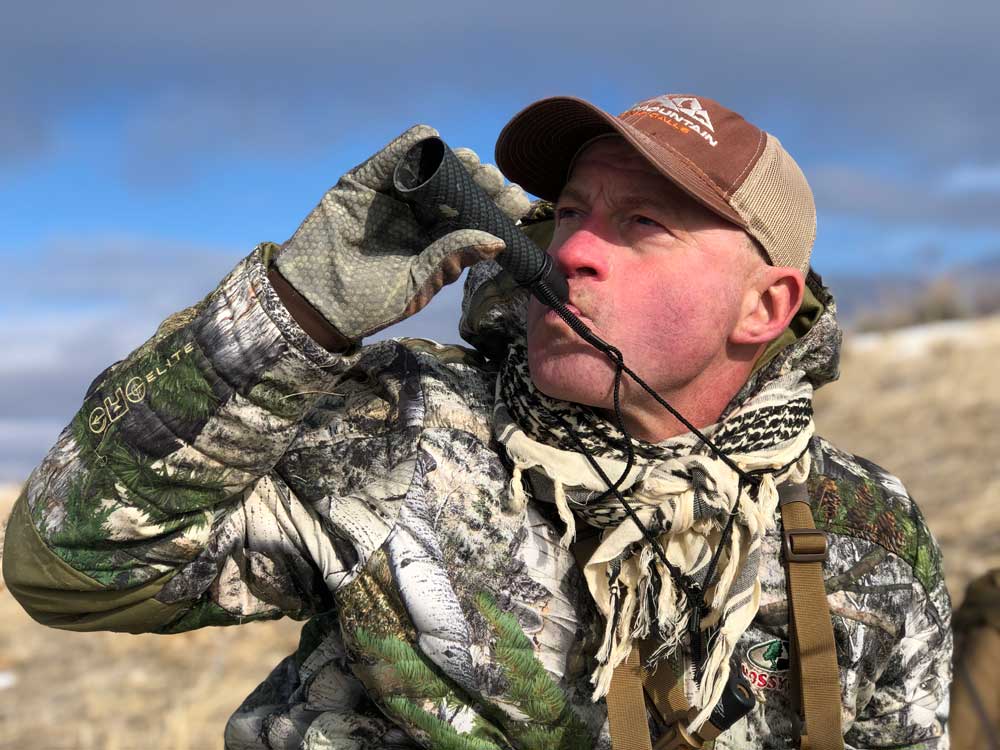
Every setup begins with my dog stationed off to my side. If a coyote arrives to my calls within shooting range, there is no need to command him to engage. Even so, he typically freelances and leaves my side for a coyote meet-and-greet. If I feel it will help draw a distant, held up coyote in, I let him range further. In either scenario, most coyotes have no aversion to closing the distance for a closer look and hopefully a fur finale for me.
Over the years, I have learned to wait up to an hour per setup. Pressured coyotes and far-off arrivals oftentimes take their time to reach the calls. On one setup, I admit to dozing off, but upon awakening it hit me my first dog Sage was MIA! Movement to my left confirmed she did not join me for naptime. She was racing back and forth with a dogged coyote determined to lure her into a UFC cage match. They went into a face-off on a distant ridge and I quickly repositioned for the long shot when Sage’s common sense kicked in. She swapped ends to return to my position.
The coyote followed and broke off halfway to circle downwind. That was a bad idea because I soon found a hole through the sagebrush and busted the big male stalking my border collie.
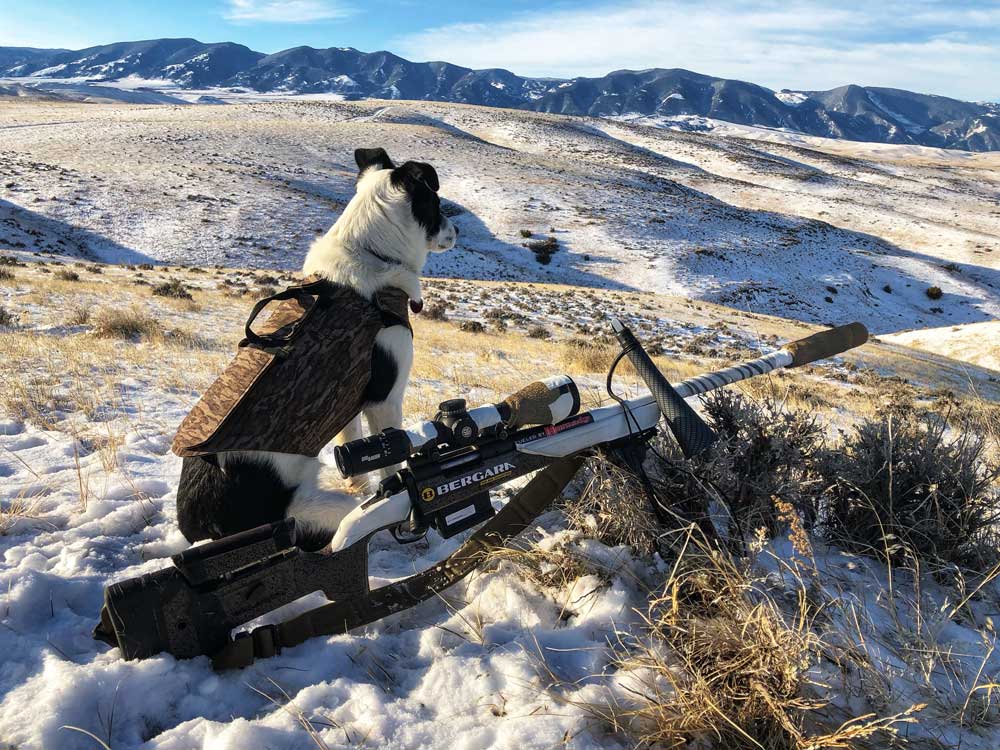
Ironically, I was at the same calling location a few days ago with my new dog Sully. We were putting in one last stand before a massive snowstorm was set to roll in. A coyote quickly appeared on a distant ridge at 300 yards, but as I steadied my BDX riflescope for the shot it disappeared back over the ridge just as quickly. Sully never saw it and the coyote never caught sight of Sully sitting beside me. Darn, I thought and returned my gaze to the rest of the broad vista, but was shocked to see another coyote to my left, sitting on an eroded bank trying to figure out what the Rocky Mountain Hunting Calls calling commotion earlier was all about.
I ranged it and a minute later it was paralleling our position in the tall sagebrush. Sully spotted it and started to engage. His offensive move toward the coyote made the coyote stop to assess. It was a bad move as the coyote stopped in a perfect opening and felt the sting of a Hornady projectile a second later. Sully raced over for the final coup and we both enjoyed a moment of warmth before the weather turned for the worse.
I cannot brag and tell you my coyote success has increased exponentially with a herding dog by my side. It has not. If I shoot a coyote a weekend on the pressured public lands I hunt, I feel like an Olympic gold medalist. Despite not stacking up coyotes like an old-time trapper, the enjoyment and satisfaction that accompanies each outing with my dog adds a partnership dimension I have yet to find with any bipedal hunting colleague.

